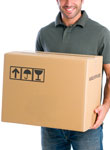By Marc Gorlin
 This year, Christmas Eve falls on a Sunday. That’s a big problem for retailers. How do stores get last-minute gifts delivered when traditional shipping companies aren’t on the road? UPS and FedEx don’t make regular deliveries that day and the U.S. Postal Service’s Sunday packages are almost entirely for Amazon, which is already pounding on retailers with same-day delivery dominance.
This year, Christmas Eve falls on a Sunday. That’s a big problem for retailers. How do stores get last-minute gifts delivered when traditional shipping companies aren’t on the road? UPS and FedEx don’t make regular deliveries that day and the U.S. Postal Service’s Sunday packages are almost entirely for Amazon, which is already pounding on retailers with same-day delivery dominance.
What can retailers do this Dec. 24? They could cut off internet orders earlier. They could eat the cost of overnight shipping. Or they could give up on last-minute sales of big-ticket items at their brick-and-mortar stores because shoppers may not readily have a large enough vehicle to get their purchases home. All of those scenarios mean lost sales or higher costs.
However, the most innovative retailers are exploring alternative delivery options.
The savviest retailers are investigating ways to win Christmas delivery, and some are already investing in a collaborative delivery solution. Walmart recently started a pilot test to have their employees deliver items on their way home, and BestBuy once had employees deliver packages from stores when a blizzard stranded items at warehouses. Other retailers are starting to realize alternative delivery is a good idea — not to mention faster, more efficient, and more sustainable.
Tapping into an existing fleet of vehicles already traveling to and from stores creates a completely new type of delivery system with ultimate flexibility on variable volumes, distance, and cost. This helps retailers increase sales with a minimal impact on margins. With Christmas Eve just around the corner, retailers have a great opportunity to innovate with a new type of delivery model and capture more of the $658 billion spent on holiday gifts each year. Collaborative Delivery might just be the innovation that saves Christmas.

 Marc Gorlin is the Founder and CEO of
Marc Gorlin is the Founder and CEO of